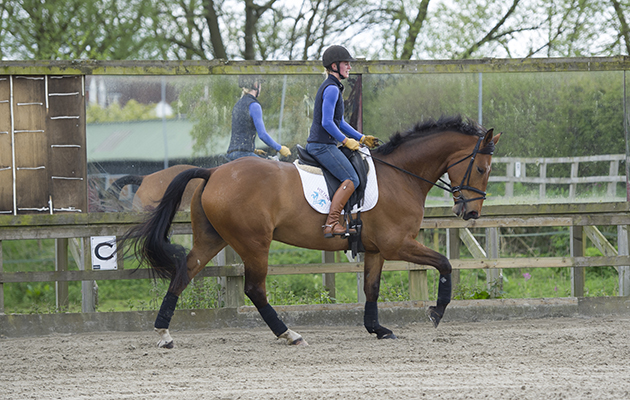After research has shown rider asymmetry can have a negative impact on a horse’s movement, riders are being encouraged to seek advice from expert practitioners working as a team to resolve any imbalance in their position. H&H speaks to biomechanics specialist Dr MacKechnie-Guire and coach Brigid Grant to find out more...
Research that found uneven stirrups can have a negative effect on equine movement emphasises the importance of teamwork in approaching rider asymmetry issues, its author believes.
Russell MacKechnie-Guire led a team looking at the effects of induced rider asymmetry, as part of a study published in the Journal of Equine Veterinary Science.
Dr MacKechnie-Guire told H&H the team used experienced riders, who were assessed by a physio to ensure they had no inherent asymmetry, and saddle fit was checked.
Advanced technology was used to assess rider position and the horses’ locomotion, then one of each rider’s stirrups was shortened by 5cm (two holes) to induce rider asymmetry. After a period of acclimatisation, the measurements were taken again.
It was found that if the left stirrup was shortened, the rider’s hips moved to the right, and the upper body leaned left.
“In the horses, the equine spine altered its range of motion with the asymmetric rider,” Dr Mackechnie-Guire said. “We know from research that spinal stability is desirable, to transfer propulsive forces from the hind limb. Therefore, based on this data an asymmetric rider caused instability.”
Joint markers also showed that load increased on both of the horse’s front and hind limbs on the opposite side to the shortened stirrup.
“Horses will seek a locomotor strategy to compensate for discomfort or imbalance. This can lead to long-term asymmetry, that could then lead to loss of performance and possible injury over time,” Dr Mackechnie-Guire said.
He added that rider symmetry is “essential”, and riders need to be aware of the impact their position can have on equine locomotion. While people should not panic, he said, it is important to seek physio, therapy or biomechanics-based solutions assessing the whole body, preferably from a practitioner who understands a rider’s needs, as well as considering exercises to help improve symmetry.
He added that coaches are also important, as they see riders regularly and that if they notice asymmetry, they should refer the rider to a practitioner.
“Of course, horses can be asymmetrical too, which is why it’s essential to work as a team – coach, saddle-fitter, vet, rider and horse physios – to assess where the asymmetry is coming from,” he said. “If the rider has developed a strategy to cope with horse and/or saddle asymmetry, and the rider gets treated, after a short period of time, the asymmetry will recur –we must work together to evaluate the horse, saddle and rider interaction.”
Coach Brigid Grant, who has trained Olympic-level eventers, told H&H she recently had a client whose horse would not bend to the left, but worked well on the right rein.
“I looked at the rider and saw it was as if her whole body was twisted to the right, while she was asking the horse to bend left,” she said. “I advised her not to work the horse properly until she’d gone to a physio.
“I think it’s super-important for the rider to be as aware of incorrectness as possible. I liken it to standing up with someone on your shoulders; if they put all their weight on one side, or lean forward or back, it’s almost impossible to walk in a straight line, or go where you’re supposed to. That’s where I start from to help the rider be aware of the effect they have on what the horse is able to do.
“I think Pilates is best as it works on equalness – left-right and front-back – as an uneven person will greatly upset the horse’s balance.”
You may also be interested in…

New studies highlight the importance of biomechanics for horse and rider *H&H Plus*

Rider biomechanics: 13 things to bear in mind if you want to be a good rider

The perfect fit: Standard and therapeutic shoeing options for your horse
Your farrier has a huge array of standard and therapeutic options at his disposal to optimise your horse’s health and

Does a good bra equal good riding? Research intends to finds out
Academics are hoping to find out whether there is a link between good breast support and good riding

Basics, rider position and attention to detail: vital lessons from Pippa Funnell
Find out what six riders learnt by spending five days with last year’s Burghley winner Pippa Funnell — there’s bound


